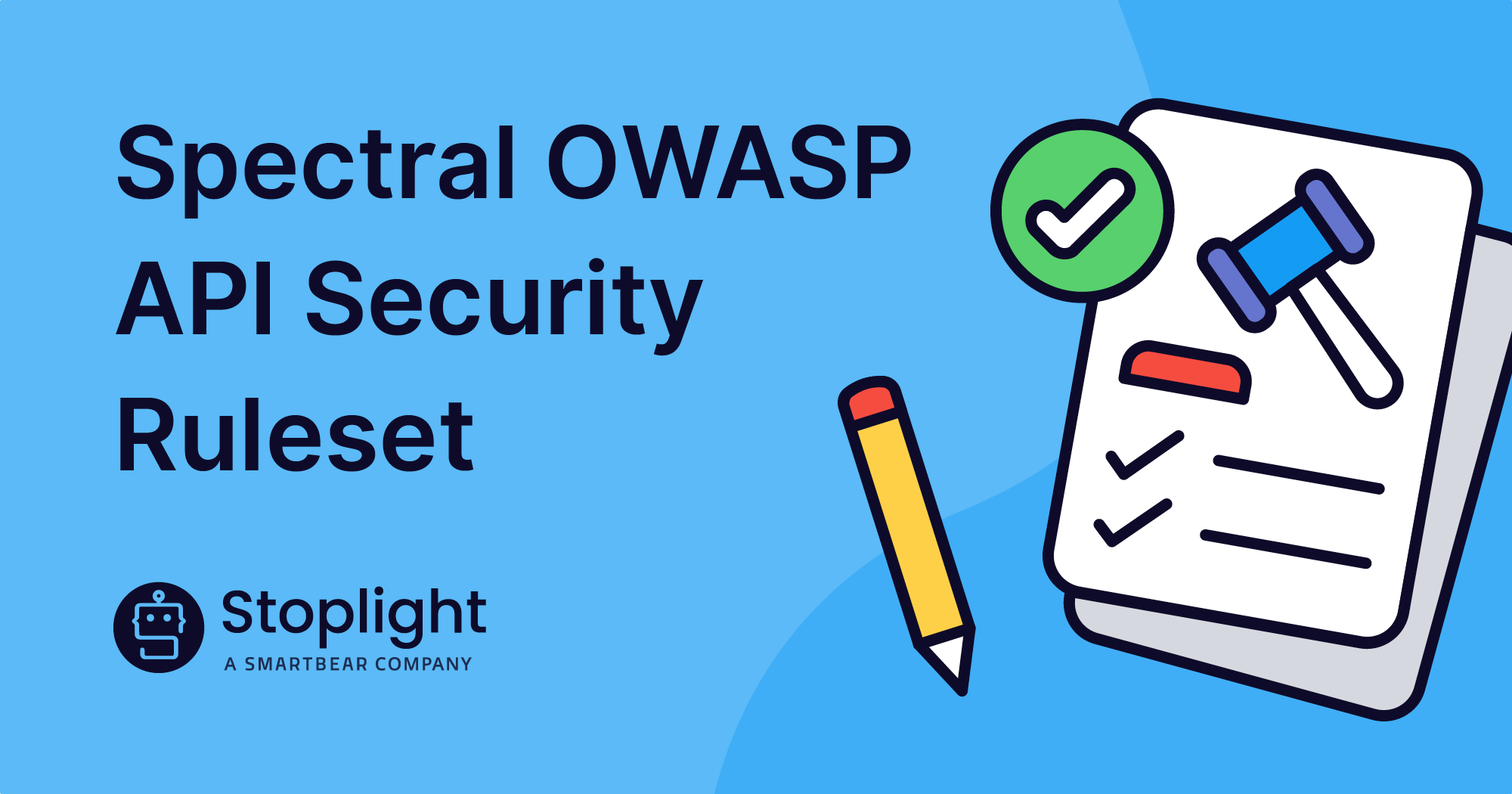2021 has been a big year in the API industry. Here at Stoplight, we had the opportunity to gather perspectives throughout the year from fascinating people in our company, customers who use the Stoplight Platform, and professionals from across the API thought industry. Beyond the clear proliferation of APIs (especially evident in a pandemic-impacted world), we learned how good APIs and great API programs can transform the business from the ground up. As we look into the year ahead, here are 10 trends shaping the future of APIs and the API management market trends.
1. If Software is Eating the World, APIs are the Teeth
Marc Andreessen’s famous declaration might be followed up with a nod to the critical role of APIs, according to Stoplight CEO Steve Rodda. No matter what industry you’re in, APIs have become a key ingredient in accelerating transformation.
The Harvard Business Review published an article this year titled, APIs Aren’t Just For Tech Companies, in which authors Tiffany Xingyu Wang and Matt McLarty (MuleSoft) state: “You don’t have to be a tech company to reap the benefits of APIs — the opportunity exists in every industry. A transformation toward APIs particularly benefits small to midsize companies that now struggle to reach digital audiences through saturated and tightly controlled ad networks and eCommerce markets.”
Here at Stoplight, we see this phenomenon in full display with customers ranging from the likes of twenty-first-century tweenagers to global conglomerates founded in the late 1800s (like Calendly and Schneider Electric, respectively).
2. Digitizing Connection
We interviewed some of the world’s top API professionals in our collaborative series with the API Days Women in APIs program. One of the clear trends we found is simply the clear acknowledgment of the human side of the digital-to-digital connection.
“There’s a human side of APIs that we have to pay attention to; every API represents a real individual relationship. Everyone in the world that has had some digital experience has experienced an API, and that will only continue to grow,” said Emmelyn Wang, Global Category Lead, Business Development at AWS Marketplace.
“I’m fascinated by how much-growing awareness there is on how APIs have a human impact around the globe. My job is a combination of my knowledge of technology combined with the business change and human change that APIs fundamentally can make a difference in,” said Melissa van der Hecht, Field CTO of Kong.
By definition, APIs disintermediate humans by connecting one computing system to another in an abstraction layer, but they still require attention to the user experience at all levels. The impact of APIs must be understood in the context of the relationship(s) they represent.
3. Destined for Day-to-Day
APIs are poised to impact every aspect of our day-to-day lives. Stoplight CTO Jason Harmon spoke with Ford’s director of data and analytics, John Musser, for a recent API Intersection episode, and learned about how the historic car company is leveraging APIs to innovate and grow its business and transform transportation experiences that impact all of us.
Many car owners already benefit from API-powered features. Need air in your tires before a trip? Get a warning about an upcoming oil change on your phone? What about a remote start from your office on a blustery winter day? Another example Musser gave is the option of getting delivery of packages to your trunk. Think about how that could impact the use of a car in your daily life.
The vast reach of technology APIs into our daily lives demands that we better understand a range of individual experiences and how they may be impacted and thus how APIs will be at the intersection. From a Stoplight point of view and with partners like API Days Women in APIs, we aim to make sure there’s a diversity of skills and perspectives shaping this new territory.
4. APIs as Products that Evolve Your Business
“I’m of the opinion that, whether you use an API management platform or your own bespoke solution, you need to manage your APIs like you would manage products that you’re offering to your customer,” said Sophie Rutard, Group Head of Data and API convenience at Euler Hermes, on the Stoplight API Intersection podcast.
Rutard’s suggestion that APIs be managed no differently than products was reinforced by additional API Intersection guests including James Higginbotham, who offers a full lifecycle approach to API program management. Higginbotham, advises companies to view their APIs as products. And, similar to any other company product, APIs should be viewed as critical business assets, not independent codebases.
When viewed as business offerings, APIs can help realize the full potential of technology. According to ZDNet’s How APIs Can Turn Your Business Into a Platform, “when treating your APIs as products, the API strategy is derived from business value, customer needs, and core technology.”
5. The API “E” words: Empathy & Experience
“If somebody does not take care to emphasize that human side, the technology side will eventually have problems,” said Matthew Reinbold, Director of API Platform Ecosystems and Digital Transformation at Postman, in our inaugural API Intersection episode.
As Reinbold expressed, empathy is vital for your API strategy’s well-being. Without enough care and consideration for user experience – whether internal or external, any product would hit a dead-end.
Fundamentally, APIs are an abstraction of complexity. Successful APIs require simplification, a thorough understanding of what’s needed and what’s not. For API designers, that demands a deep appreciation for the experience of the developer who will use the API as well as their ultimate consumers. Without thoughtful design at the outset, it may prove impossible to remove the barriers to API success.
6. Make Magic as the APIs Multiply
In a world where APIs are in increasingly high demand and API industrial work is on the rise, there is a high pressure to create and develop quickly, but that can lead to technical debt and issues later on. Care must be taken to establish a holistic strategy for API development, implementation, adoption, and monitoring.
“The fundamental purpose of an API is to connect applications — so don’t let the implementation process create organizational disconnects,” said James Higginbotham, CEO, and founder of API consultancy LaunchAny, on our API Intersection Podcast.
Despite the rapid proliferation of APIs, many companies across industries have failed to implement a robust API strategy roadmap. This failure can cause them to miss out on the value they originally envisioned from mission-critical digital transformation initiatives. More companies are now starting to take heed and get with the “API program” program, so to speak, and follow the recommendations of folks like Higgenbotham. We say, keep it up!
7. The “A(PI)” Team: Getting the Basics Right
APIs are beginning to touch everything in the software development lifecycle. How do you provide guidelines for continuity, security, and style while also encouraging developer agency and satisfaction? As your organization and API capacity and output grow, so will the number of people in your organization who touch them.
Larger organizations are increasingly identifying teams who help manage the widening and deepening influence of APIs on the technical DNA of a company. How do these groups wield the most impact? Arnaud Lauret, the API Handyman, Author of The Design of Web APIs, often said that: “As an API designer reviewer, I am here to help you. I am not here to tell you that what you do is wrong. I am not here to tell you how to do your API. I will explain to you design principles based on what you show me.”
Arnaud was one of our guests on the API Intersection podcast who discussed the ultimate guide to style guides and design reviews. He explained how he tackles API design reviews by asking, “What do you want to do with your APIs, and how do you want to do it? And what are the rules of your domain? Why do you name it like that?” Ultimately, he said, “If you want to be a good API design reviewer, you must not be afraid to ask stupid questions, and it’s really for the better.”
8. Accelerating Investment
“Looking to the future, our research indicates that businesses plan to increase investments in API programs. Companies report that their key priorities for 2021 include a focus on API security & governance (50%), growth and management of API adoption (41%), investment in building a developer community (38%), generating revenue by monetizing APIs (31%), making more services & data publicly available (31%), and growing their investment in API operations and monitoring (20%),” this bullish assessment is courtesy of Google’s State of the API Economy Statistics 2021 Report.
It seems clear that good governance, robust security, and a healthy developer community will be the focus of the next phase of the API economy. (The API economy refers to the controlled exchange of digital data and services through APIs.) API security trends are particularly on the rise. The rapid trajectory of API growth doesn’t stop here, and there will be a continued emphasis on ensuring API programs are secure with proper governance. Many API companies are also looking to build more robust developer communities to support their blooming API programs, as we see in our own new developer Stoplight Community on Discord.
9. First Things First
“You wouldn’t build a house without a blueprint, so why would you build APIs without a plan? In an API design-first development process, API architects begin with writing a specification and engaging all stakeholders in the process from its inception. The result of a design-first process is an API product that is comprehensive, consistent, and understandable by both collaborators and machines,” said Steve Rodda, Stoplight CEO, in his post 4 Reasons to Choose a Design-First Approach.
When it comes to how to start designing your API, you want to make sure you have it right from inception. While many organizations will push API-first, take it a step further with design-first to consider the entire community that will encounter your API and design it with that end metropolis in mind.
10. “You Say You Want a Revolution”
The signs are clear: APIs represent a change in the fundamental infrastructure of technology. Software development organizations are left scrambling to catch up. How does API development fit into the overall software development lifecycle? We hear that too often, APIs are slotted in too late in the process, and everyone left deals with clean-up after the fact.
And the API tooling landscape is likely daunting to those new to the space with hundreds of tools. Perhaps there are so many because we’re dealing with the pieces that fall on the factory floor. What will your future APIs look like?
Rethinking the software development lifecycle completely will give companies more control over their output and drive more successful business outcomes. From aligning with strategic goals to establishing a cross-functional team, or focusing on empathy-driven experiences and managing a roadmap, the API future is not “code-first” or even “API first,” it’s about design first!

